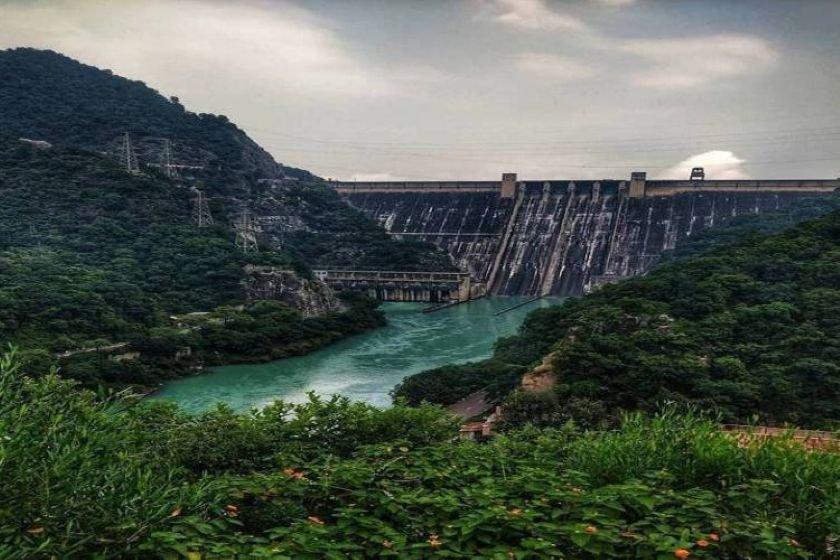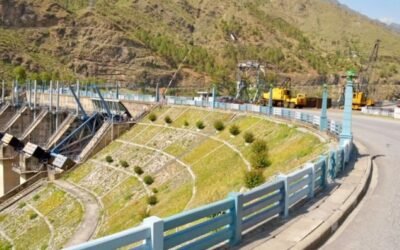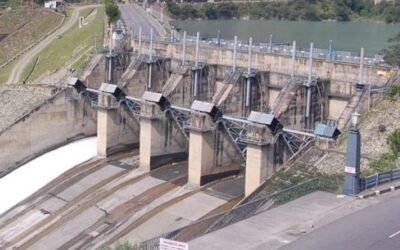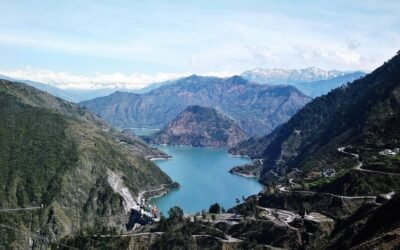Overview:
Rising 226 meters (741 feet) above the Sutlej River, Bhakra Dam is one of the tallest gravity dams in the world. Located in Bhakra village, Bilaspur district, it forms the majestic Gobind Sagar Lake, offering a rare blend of technological grandeur and natural serenity. Commissioned in 1963, this dam is a cornerstone of India’s hydroelectric and irrigation infrastructure—and a must-visit for travelers seeking awe-inspiring views and historical depth.
📍 Location & Key Facts
| Attribute | Details |
|---|---|
| Coordinates | 31.4108°N, 76.4333°E |
| Elevation | ~518 meters above sea level |
| Height | 226 meters (741 feet) |
| Length | 518.25 meters |
| River | Sutlej |
| Reservoir | Gobind Sagar Lake (90 km long, 170 sq. km area) |
| Year Completed | 1963 |
| Nearby Towns | Nangal (15 km), Bilaspur (106 km), Naina Devi (20 km) |
🛣️ How to Reach
- By Road:
- From Chandigarh: ~115 km via NH205 (approx. 3 hours)
- From Shimla: ~120 km via NH205
- From Delhi: ~370 km via NH44 and NH205
- By Train:
- Nearest station: Nangal Railway Station (~12 km)
- Well-connected to Chandigarh, Ambala, and Delhi
- By Air:
- Nearest airport: Chandigarh International Airport (~115 km)
🌄 Scenic Beauty & Viewpoints
- Gobind Sagar Lake Views:
The dam’s reservoir stretches like a sapphire ribbon through the hills, offering panoramic views from multiple vantage points—especially near Luhnu Ground and Swarghat. - Sunrise & Sunset:
The golden hour paints the dam and lake in surreal hues—ideal for photography and quiet reflection. - Forest Drive:
The approach road from Nangal to Bhakra winds through lush forests and hills, with occasional glimpses of the emerald Sutlej below.
⚙️ Engineering Marvel
- Concrete Gravity Design:
Built with over 3.4 million cubic meters of concrete, Bhakra Dam is a testament to mid-20th-century engineering. - Hydropower Generation:
- Installed Capacity: 1,325 MW
- Powers multiple northern states including Punjab, Haryana, and Delhi
- Flood Control & Irrigation:
The dam regulates water for over 10 million acres of farmland across northern India. - Historical Significance:
Described by Jawaharlal Nehru as the “New Temple of Resurgent India,” it symbolizes the nation’s industrial awakening.
🧭 Visitor Tips
- Entry Requirements:
Visitors must obtain a pass from the Bhakra Beas Management Board (BBMB) office in Nangal. Carry valid ID (like Aadhaar). - Photography Restrictions:
Photography is prohibited near the dam structure for security reasons. However, scenic shots are allowed from designated viewpoints beyond the dam zone. - Best Time to Visit:
- October to March: Pleasant weather, clear skies
- Weekdays: Less crowded, more peaceful experience
- Morning Hours (9–11 AM): Ideal for views and exploration
🏞️ Nearby Attractions
- Naina Devi Temple – A revered Shaktipeeth perched on a hilltop (20 km)
- Gobind Sagar Lake – Boating, birdwatching, and fishing
- Swarghat – A serene hill station with panoramic views
- Baba Garib Nath Temple – A peaceful lakeside shrine near the dam




